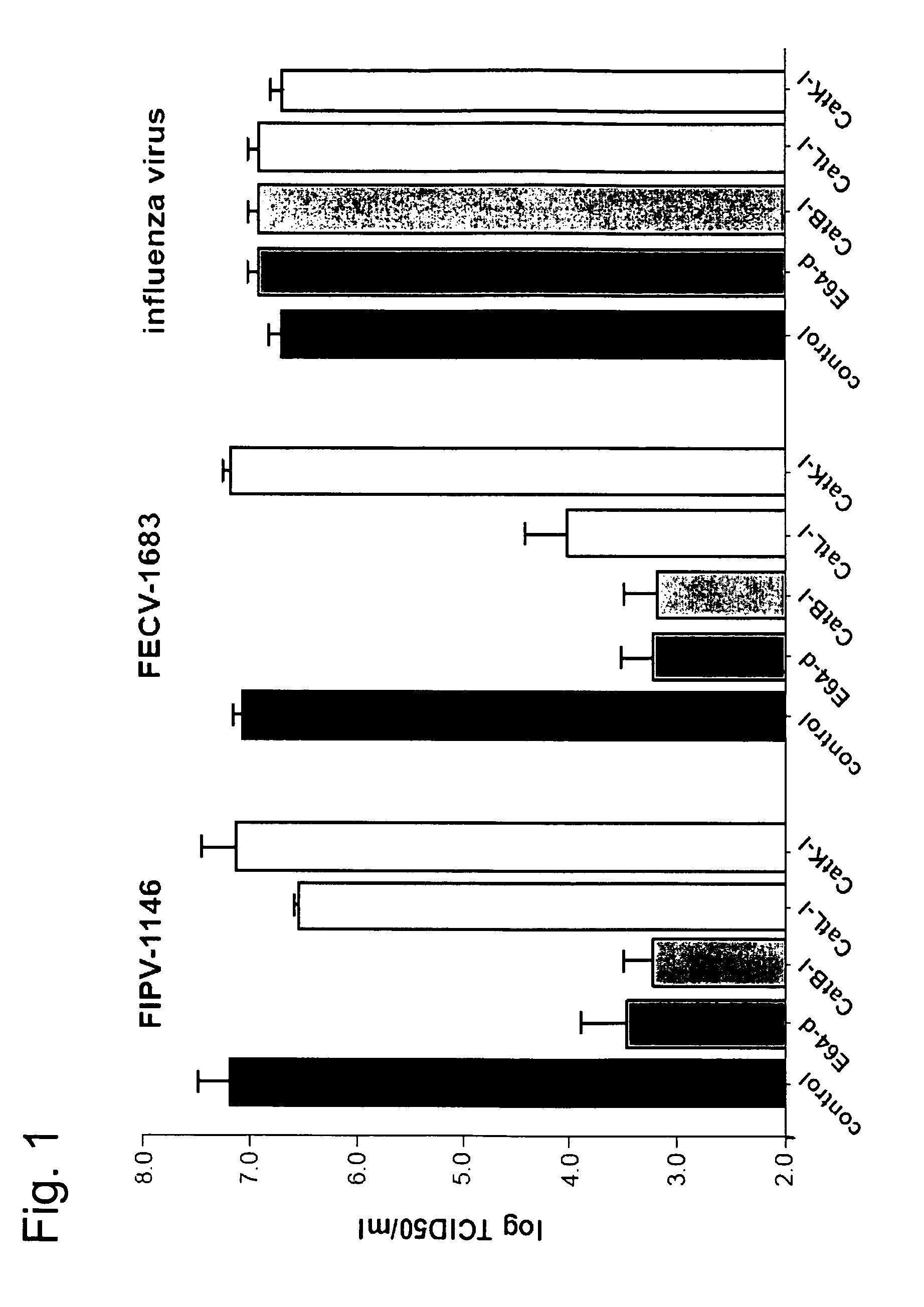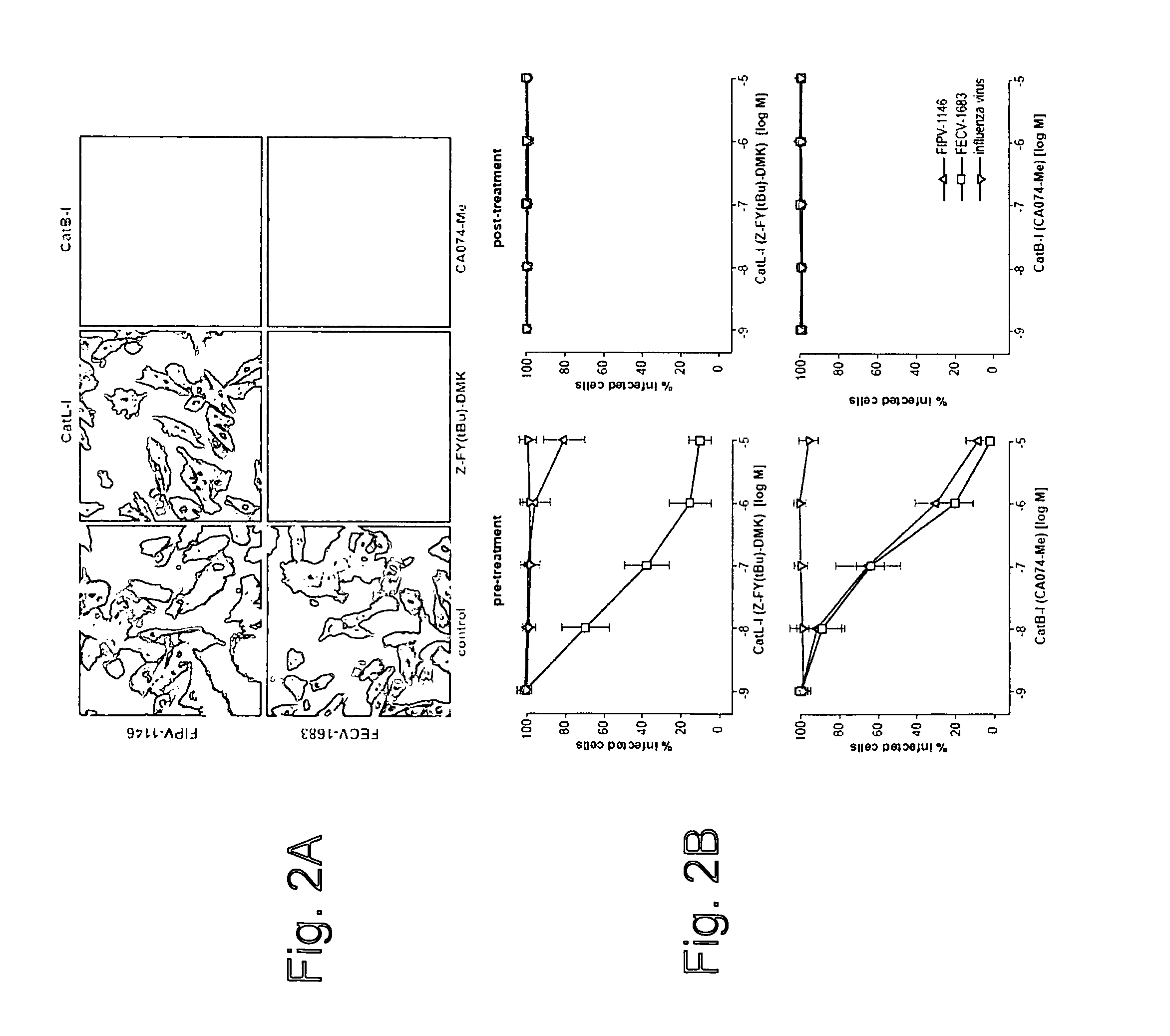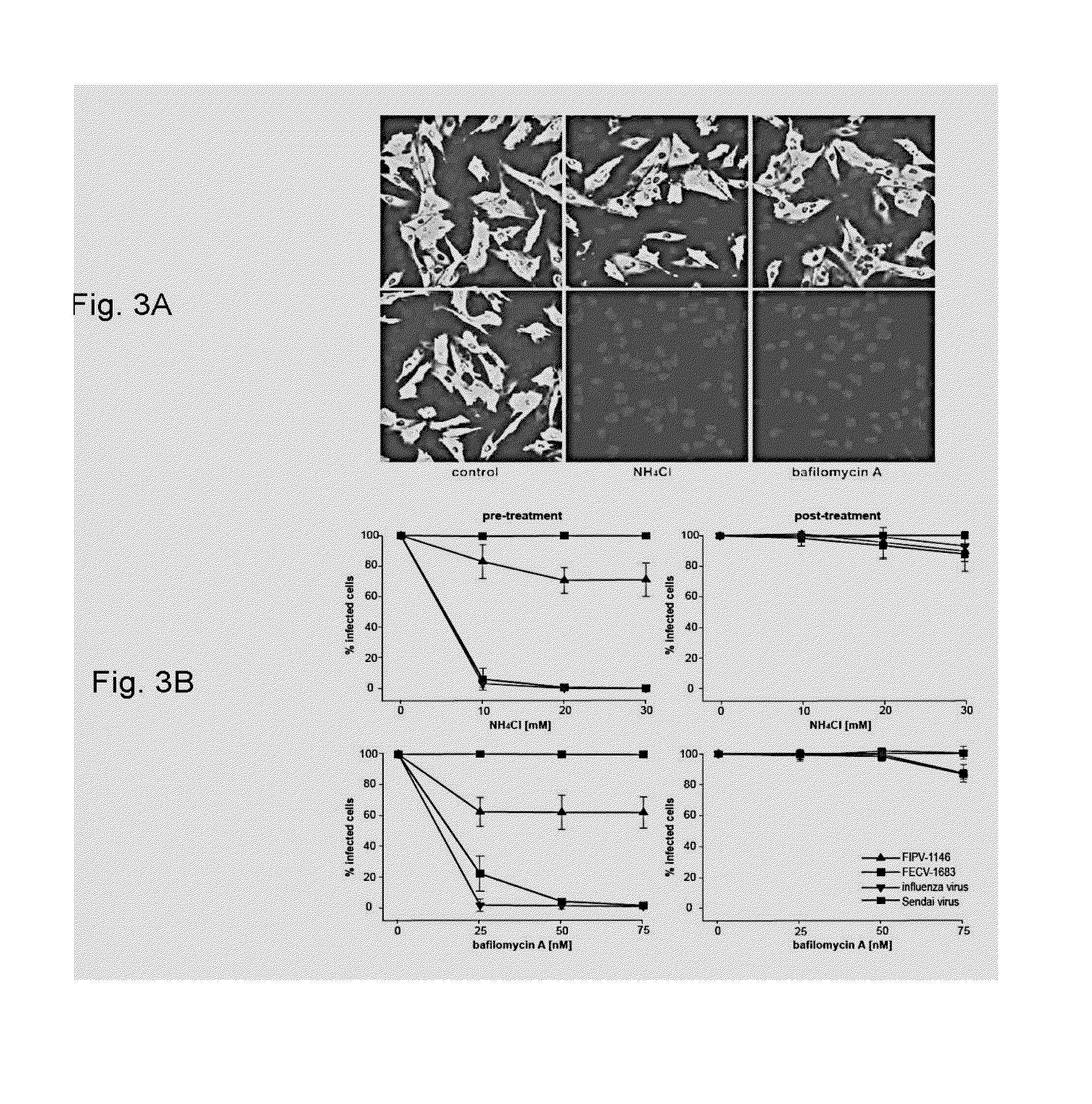Method for prophylaxis or treatment of feline infectious peritonitis
a feline infectious peritonitis and prophylaxis technology, applied in the field of animal health, can solve the problems of no treatment available for feline infectious peritonitis, high lethal fip, etc., and achieve the effect of prophylaxis or treatmen
- Summary
- Abstract
- Description
- Claims
- Application Information
AI Technical Summary
Benefits of technology
Problems solved by technology
Method used
Image
Examples
example 1
[0041]This Example describes the Materials and Methods used to obtain the data presented in the Examples that follow below.
Cell Lines and Primary Feline Monocytes
[0042]Crandell-Rees Feline Kidney (CRFK) cells and feline fetal lung cells (AK-D) were obtained from the American Type Culture Collection (ATCC). A-72 cells were provided by Dr. Colin Parrish (Cornell University, Baker Institute for Animal Health). Fc2Lu cells were provided by Dr. Ed Dubovi (Animal Health Diagnostic Center, New York State College of Veterinary Medicine, Cornell University.). Primary feline monocytes were individually purified from the blood of three SPF cats (Liberty Research Inc., Waverly, N.Y.) using a standard Ficoll-paque gradient (GE Healthcare) as specified by the manufacturer. Monocytes were seeded in 24-well plates and allowed to attach to culture-treated glass coverslips overnight. After washing, the purity of monocyte preparations was checked by immunofluorescence microscopy using the monocyte mar...
example 2
[0047]This Example describes effect of cysteine proteases on the propagation of FIPV-1146 and FECV-1683 in vitro. FIPV-1146 and FECV-1683 are genotypically very similar and are known to share a high degree of amino acid identity in their spike protein (>95%) yet cause radically different clinical outcomes—lethal vasculitis for FIPV-1146, compared to mild enteritis for FECV-1683.
[0048]To determine the role of cysteine proteases in the life cycle of FIPV-1146 and FECV-1683, we first pre-treated A-72 cells with the cell-permeable irreversible cysteine protease inhibitor E-64d, which non-selectively inhibits a range of cysteine proteases. Cells were then infected with either FIPV-1146 or FECV-1683. As a control, cells were infected with influenza virus, which is not believed to require proteolytic activation by cysteine proteases during entry. We collected cell supernatants at 9 h post-infection and assayed virus production by TCID50 assay. Pretreatment with E-64d significantly reduced ...
example 3
[0050]This Example provides an analysis of the role of cathepsin B and L during entry of FIPV-1146 and FECV-1683 into host cells. To establish if the effects of the cathepsin B and L inhibitors occurred during virus entry, A-72 cells were treated with five log dilutions of inhibitor either 60 min pre-infection, or 60 min post-infection, and then infected with FIPV-1146 or FECV-1683. Cells were fixed 6 hours post-infection, and infected cells were detected by immunofluorescence microscopy using the anti-FcoV nucleocapsid monoclonal antibody 17B7.1, and quantified (FIG. 2). Pre-incubation with the selective cathepsin B inhibitor almost completely blocked infection by FIPV-1146, however treatment after entry had no effect (FIG. 2). Consistent with data from viral growth assays, the cathepsin L inhibitor had no effect on FIPV-1146 entry, except for some limited effect at the highest concentration tested (FIG. 2B). Pre-incubation with either cathepsin B or cathepsin L inhibitor both pote...
PUM
| Property | Measurement | Unit |
|---|---|---|
| pH | aaaaa | aaaaa |
| pH | aaaaa | aaaaa |
| body weight | aaaaa | aaaaa |
Abstract
Description
Claims
Application Information
 Login to View More
Login to View More - R&D
- Intellectual Property
- Life Sciences
- Materials
- Tech Scout
- Unparalleled Data Quality
- Higher Quality Content
- 60% Fewer Hallucinations
Browse by: Latest US Patents, China's latest patents, Technical Efficacy Thesaurus, Application Domain, Technology Topic, Popular Technical Reports.
© 2025 PatSnap. All rights reserved.Legal|Privacy policy|Modern Slavery Act Transparency Statement|Sitemap|About US| Contact US: help@patsnap.com



